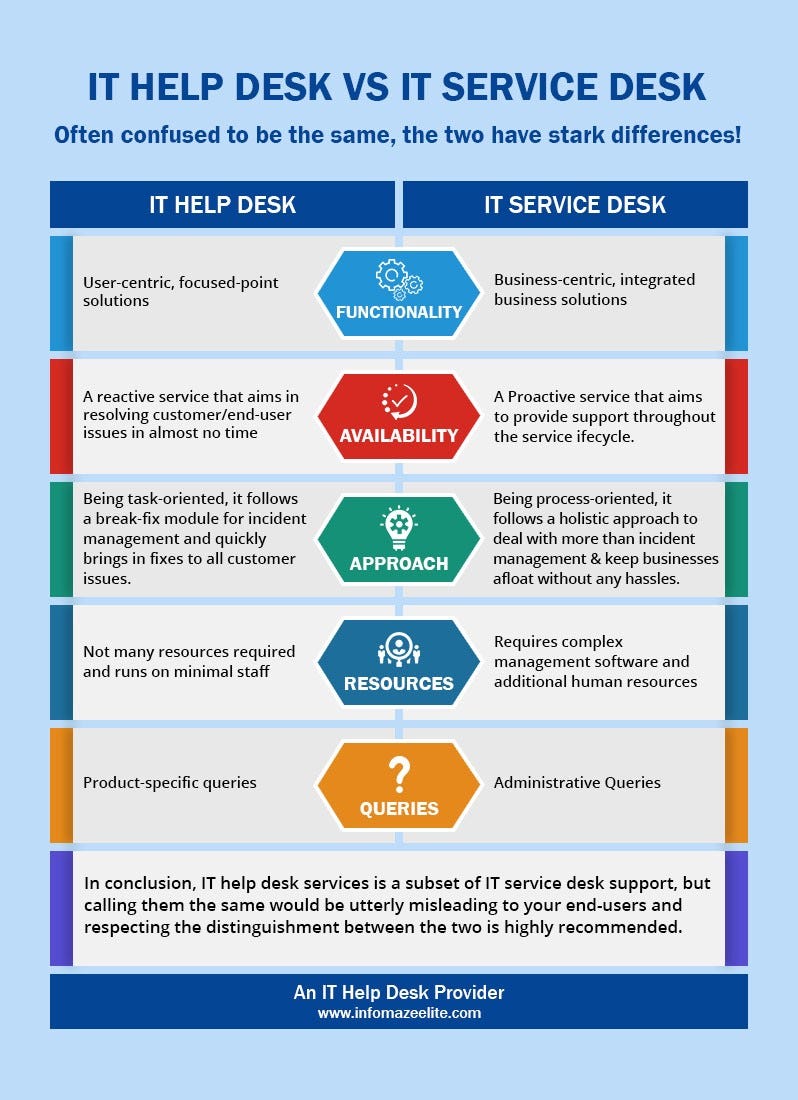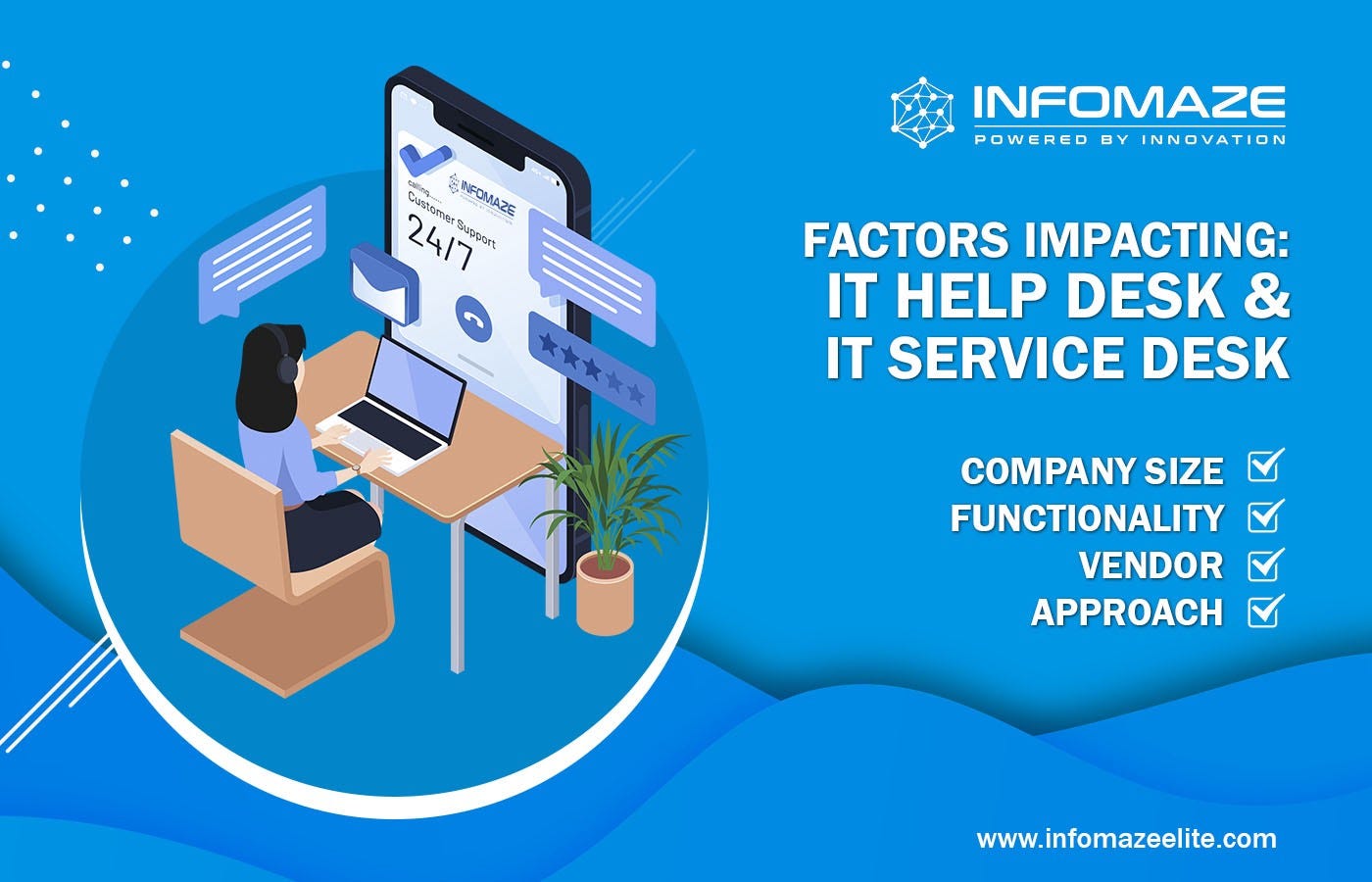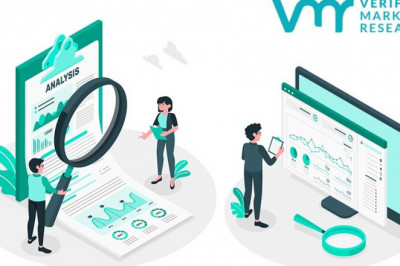views

When it comes to the IT help desk & service desk, the confusion between the two is unanimously present. It is crucial to understand what they mean and the difference between the service desk and the help desk.
The clarity between the two is significant to both enterprises looking to hire/outsource their IT help desk services/service desk requirements and the companies that provide outsourcing. Each of the above-mentioned has a unique set of purposes to serve.
It is not advisable to mix the two or call them by interchangeable names, as it is often done based on the widespread belief that they are the same. Here we speak the truth of IT help desk services & service desks and compare the two to make the distinctions stand out.
So, let’s quickly jump into understanding what IT help desk services and service desk entails in an elaborated manner.
What is IT Help Desk Services?
Although it is a sub-set of service desk, IT help desk services cater to end-user needs quickly and reactively. The essential requirement in an IT help desk service is providing efficient solutions in almost no time. The tech support functions to resolve the incidents swiftly facilitates a seamless run of their business.
Before we dig further into IT help desk services, let us understand briefly what service desk means.
What is a Service Desk?
A service desk adheres to providing their aid at an organizational level than to a particular end-user. It aims at improving the business workflow & communications by proactively working on the IT organization and processes. The overall business goals are taken care of with the service desk as IT as a service. And, the service desk acts as a single point of contact between the users and the service providers.
Now that we understand what the IT help desk and service desk is at their core, we can look deeper and understand better why the IT help desk vs service desk distinguishes are required.
Feature Highlights of IT Help Desk Services
- Responsible for all IT support issues to resolve on a break/fix concept.
- Incident management & resolution
- Tier system with Level 1 and Level 2 support
- SLAs (service level agreements)
- Self-service portal
- Dashboard and reporting
Feature Highlights of Service Desk
- Complete case management
- Single point of contact for business processes and all IT-related areas
- Organized asset management
- Seamless change management
- Release and deployment management
- Knowledge base
- Self-service portal
Now that we know the features of the IT help desk and service desk, we will move on to the difference between the service desk and IT help desk services.
Difference Between Service Desk and Help Desk.

Before we dive into the differences in detail, the above discussion should have given some idea of how the service desk is different from the help desk.
- While the service desk is organizational & business-centric, the help desk is end-user specific & client-centric.
The service desk has a broader spectrum in dealing with business processes and is involved in managing knowledge, incident, problem, change, and assets. While the IT help desk services usually involve resolution of tickets & self-service capabilities.
- The service desk is proactive when the IT help desk is reactive.
As the service desk primarily concentrates on streamlining all business processes, it mainly requires strategizing and proactive IT as a service for the organization. But, when it comes to IT help desk services, it is meant for immediate, timely response to an IT issue with a ticket raised for every case and closed once resolved.
- Principles of service desk vs help desk services
Although the principles that set both the services at high standards are the same, including transparency, keeping things simple, there are differences in how these are achieved. The service desk takes a holistic approach, while the IT help desk takes a break/fix approach. And, also the service desk requires a more collaborative method than the IT help desk, which requires minimal staff.
- Service desk vs IT help desk history.
Even though the two terminologies are confused, the two share quite a different history. The service desk originated from the help desk. However, now the service desk covers a broader spectrum of IT support under which the IT help desk falls, with a narrower purpose of resolving incidents.
Having checked out the difference between the service desk and help desk, understanding the types of service desk and levels of help desk gives us more insight into how to put them to use in the right and efficient way.
Types of Service Desk
Choosing the correct service desk is of paramount significance as it either expands the possibilities or limits them. Hence we mention the types of service desks below:
- Local Desk: Although it is not the most cost-efficient way, it provides an edge by giving local and faster communication through the localized service desk within the end-user community.
- Centralized: This type of service desk serves the end-users from different physical locations from a central service desk hub. It is more of a centralized location to manage all local service desks. As a result, it requires lesser staff and is more cost-effective.
- Virtual: The kind of service desk more suitable for larger companies with the help desk remotely present in a different geographical location and serving multiple departments and more.
- Follow the Sun: Getting a 24x7 service desk offering is essential when you cannot afford to close as the sun sets down on your location, and you also have end-users on a different place where the sun is still up. Follow the sun type of service desk offers a solution by having two service desks take over in shifts from two different time zones.
Types of Help Desk
More accurately, the types of help desk software which can be used to offer IT help desk services. Choosing the appropriate help desk software helps decide how efficiently you can run your IT help desk services.
The types of help desk are as follows:
- Cloud-based help desk: To provide the IT help desk services, in this case, you use a SaaS (Software as a Service), cloud-based IT help desk software hosted on a vendor server. You can concentrate on providing effective help desk services than worrying about software maintenance. It also makes scalability easy.
- Enterprise help desk: With an enterprise, apart from providing help desk services to your clients, an in-house help desk is a must. Getting custom-made help desk software to accommodate all of your enterprise needs is possible only with enterprise help desk software. With enterprise help desk software, there is no need to have a different solution for your clients and in-house employees. The software works effectively for both.
- On-premises help desk: This help desk service is also referred to as a self-hosted help desk. The companies get the licensed software and control its access. However, having in-house software maintenance, updates, troubleshooting is mandatorily required in this case. This help desk’s control and security make handling secure when working with data-sensitive information.
- Open-source help desk: In the case of an open-source help desk, access to the software’s source code is available to make the required customizations while the bug fixing and updates are taken care of by a community dedicated to working on the same. The benefit of using open-source software is that you can choose your customizations and not worry about subscription charges or anything similar to that.
It is also vital to highlight the tier system or levels of the help desk system fundamental to any IT help desk service.
Levels of IT Help Desk Services
- Tier 1 IT Help Desk Services: This is the primary level of IT help desk services — the tier 1 level deals with the lower-level technical issues, which are resolvable in 15 mins or less.
- Tier 2 IT Help Desk Services: Tier 2 would be the next level where technical knowledge and expertise are required to resolve issues in the system. When the issue is severe, it is escalated to the next level.
- Tier 3 IT Help Desk Services: This level includes the product’s creators/chief architects/engineers. Tier 3 duplicates the issue and work towards building a solution.
- Tier 4 IT Help Desk Services: Tier 4 gets involved when the issue in question is not from your product but a third-party product partner with whom you get involved and resolve it.
Now that we understand the difference between service desk and IT help desk services, their types and levels involved in IT help desk services, let’s jump into the advantages of service desk and IT help desk services without further delays.
Advantages of Service Desk
Having an efficient service desk helps improve your overall performance as you direct the right resources on the right tasks without worrying about the business workflow being interrupted.
Here are the benefits that you get from excellent service desk support:
- Seamless communication with integrated ITSM processes
- Increased customer satisfaction
- Efficient resource management
- Single point of contact for all of the queries from the IT area, business applications and processes.
- High-resolution rates and their tracking in real-time
- Proactive management of all business solutions and workflows
- Fast turnarounds and practical outputs
- Also, it provides self-service capabilities for incident and service requests.
Advantages of IT Help Desk Services
The tech support functionalities, when done right, offers many benefits to the company procuring the outsourced IT help desk services.
Here are the benefits from exceptional IT help desk services:
- When you outsource the IT help desk services, it acts as a single point of contact and helps your MSPs to attend to your customers.
- The ticketing systems help keep incidents management organized and help set ticket priorities correctly and effectively, providing efficient incident and service request management.
- The tier structure of IT help desk support aids in effectively handling the issues and paves the way for a quick resolution.
- It also provides basic self-service options.
- It also connects other ITSM practices at a basic level and provides cost-effective IT solutions for small companies.
- IT help desk helps in easy tracking of the issue resolvement and brings automation in providing IT support for your clients.
The above advantages of the IT help desk services and the service desk support are gained only when used appropriately. Multiple factors influence IT help desk outsourcing or IT service desk support efficiency. Some of the factors that affect are given below.
Factors that Influence IT Help Desk and Service Desk:

Company Size: If you have a large enterprise or manage an SME, the service desk and IT help desk service needs vary accordingly. Using software that perfectly fits an SME cannot be used for a large enterprise as the software may not be able to handle the data efficiently, and the other way round will not work either as most features won’t be required. The solution will not be cost-efficient anymore.
Functionality: Depending on the functional requirements having the exemplary service desk and IT help desk software is necessary. The suitable configurations and add-ons make or break your service desk/IT help desk processes and keep the business workflow intact.
Vendor: If you are a business looking for a vendor who provides outsourced IT help desk services or service desk support, choosing the right partners dramatically impacts your business growth. Matching on multiple factors including ethics, communication, way of conducting businesses, among others, should be on the same page as this central in managing the service desk and IT help desk services.
Approach: If you are the company providing the service desk or IT help desk outsourcing, or when it comes to defining yourselves, the appropriate way is vital as it clarifies the approach you follow.
In conclusion, this blog helps you understand the crucial things to keep in mind when choosing between service desk vs IT help desk, whether when you are looking for vendors or if you are the vendor trying to define yourself the best way.
From understanding what service desk/IT help desk is to the difference between them and much more, this is your perfect guide to understand IT Help Desk vs Service Desk: A Comparison.
Source: Factors that Influence IT Help Desk and Service Desk












Comments
0 comment